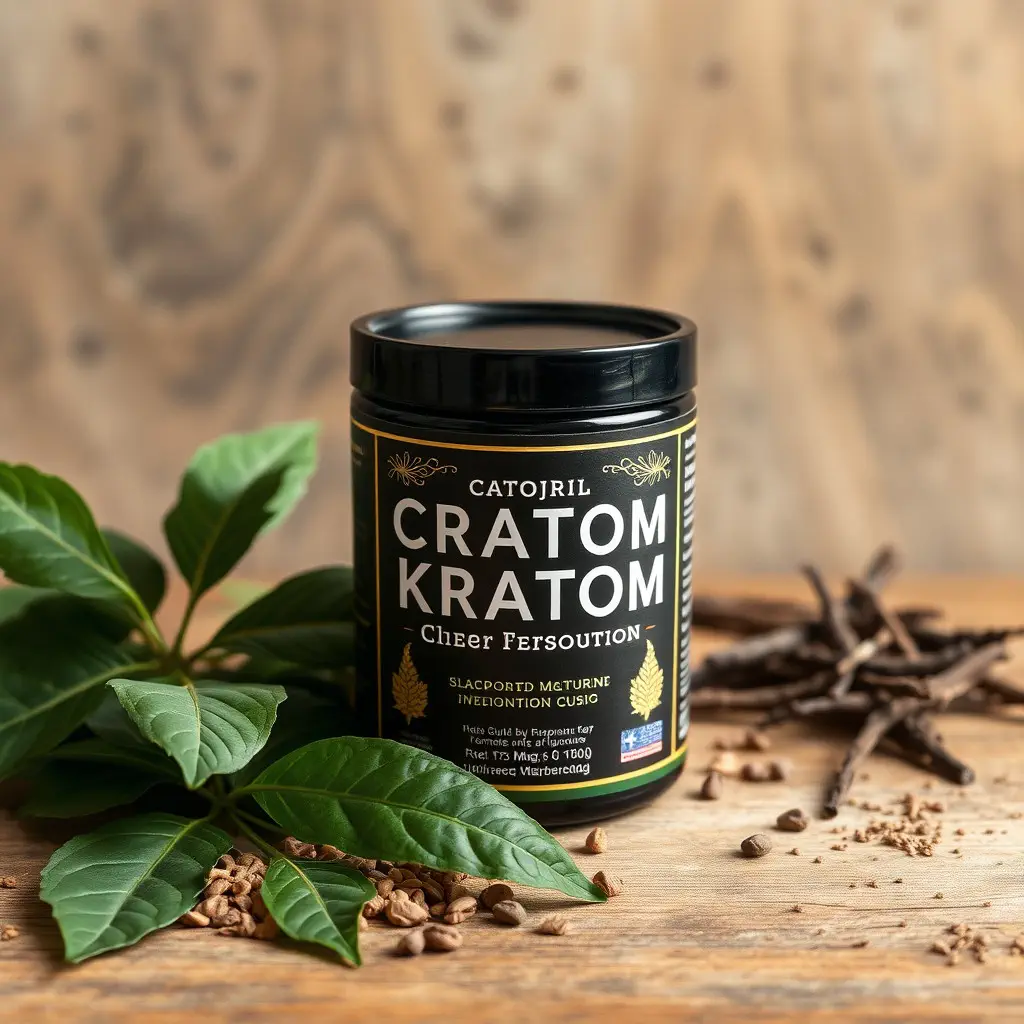Athletes often encounter muscle soreness post-intense training or competition, which can hinder their recovery and performance. Kratom, sourced from a tropical plant and containing alkaloids like mitragynine and 7-hydroxymitragynine, offers a natural pathway for muscle soreness relief by interacting with opioid receptors to provide analgesic effects and anti-inflammatory benefits. Kratom coaching is an emerging resource for athletes, tailoring dosages and strains to individual needs for optimized recovery. This coaching also advises on the strategic timing of kratom intake before or after workouts to enhance performance or muscle healing. It's crucial for athletes to consult healthcare professionals before using kratom due to its legal status and variability in individual responses. Proper education on strain selection, dosage, and potential interactions is key to ensuring safe and effective use of kratom for muscle soreness relief, promoting recovery without exceeding safe usage thresholds. Kratom coaching integrates this supplement into a comprehensive recovery strategy that includes nutrition, hydration, and rest, aiming to support athletes in maintaining peak performance and facilitating rapid recovery between training sessions.
Athletes are continually seeking innovative strategies to enhance their performance and optimize recovery, a critical component of any training regimen. Kratom, a natural supplement derived from the Mitragyna speciosa tree, has emerged as a potential ally in achieving these goals. This article delves into the multifaceted benefits of kratom for muscle soreness relief and its role in athletic recovery. From understanding its mechanisms to crafting an effective recovery protocol, readers will gain valuable insights into how kratom can be integrated into their routine for enhanced wellness and peak performance. Explore the transformative impact of kratom coaching on athletic recuperation, and learn how it can become a cornerstone in your journey toward physical excellence.
- Unlocking Muscle Soreness Relief with Kratom: A Comprehensive Guide for Athletes
- The Role of Kratom in Athletic Recovery: Understanding Its Mechanisms and Effects
- Crafting a Kratom-Based Recovery Protocol: Strategies for Optimal Performance and Wellness
Unlocking Muscle Soreness Relief with Kratom: A Comprehensive Guide for Athletes

Muscle soreness is a common challenge athletes face, particularly after intense training sessions or competitions. The natural recovery process can be expedited with the judicious use of kratom, a plant-based supplement known for its potential to alleviate muscle soreness and promote relaxation. Kratom contains various alkaloids, such as mitragynine and 7-hydroxymitragynine, which are believed to interact with opioid receptors in the brain, providing pain relief and reducing inflammation that contributes to muscle soreness. By incorporating kratom coaching into their regimen, athletes can optimize their recovery by learning the correct dosages and strains most suitable for their specific needs and conditions. Kratom coaching also educates on the best timing for kratom intake, whether pre-workout for potential performance enhancement or post-workout to aid in muscle recovery, ensuring that athletes receive the maximum benefits without overstepping safe usage limits. It’s crucial for athletes to consult with healthcare professionals before integrating kratom into their wellness routines, as individual sensitivities and the legal status of kratom vary by region. Proper education on strain selection, dosage, and potential interactions with other substances is paramount in harnessing muscle soreness relief with kratom safely and effectively for athletic recovery.
The Role of Kratom in Athletic Recovery: Understanding Its Mechanisms and Effects

Kratom, a plant originating from Southeast Asia, has garnered attention within athletic circles for its potential role in aiding muscle soreness relief and optimizing recovery processes. The alkaloids found in kratom leaves interact with the body’s opioid receptors, which can help manage pain associated with intense physical activity. This interaction may provide temporary pain relief, allowing athletes to engage in subsequent training sessions or competitions without the debilitating effects of muscle soreness. Moreover, kratom is believed to influence the brain’s neurotransmitters, such as dopamine and serotonin, which could contribute to improved mood and enhanced motivation—key components for maintaining consistent training regimens.
Incorporating kratom into a recovery protocol may offer additional benefits beyond pain management. The herb is thought to possess anti-inflammatory properties, which can be instrumental in reducing the inflammation that often accompanies muscle strain and injury. Additionally, it has been observed to aid in the restoration of energy levels, a critical aspect for athletes seeking to recover swiftly between training periods. It’s important for athletes to understand the mechanisms behind kratom’s effects to use it judiciously within their recovery strategies, ensuring they adhere to recommended dosages and consider individual sensitivities or potential interactions with other medications. Proper guidance from a qualified kratom coach can be invaluable in navigating its use for muscle soreness relief and optimizing athletic performance and recovery.
Crafting a Kratom-Based Recovery Protocol: Strategies for Optimal Performance and Wellness

Athletes often push their bodies beyond the limits, and muscle soreness is a common consequence of intense training and competition. To mitigate this, kratom has emerged as a potential natural ally for athletes seeking relief from post-exercise discomfort. Crafting a kratom-based recovery protocol involves careful consideration of strain selection, dosage, timing, and individual response to the substance. Mitragyna speciosa, commonly known as kratom, contains alkaloids that interact with the body’s opioid receptors, offering pain relief properties without the side effects associated with prescription painkillers. The key to leveraging kratom for muscle soreness lies in selecting strains like Maeng Da or Bali, which are known for their analgesic effects. Additionally, integrating kratom into a comprehensive recovery regimen that includes proper nutrition, hydration, and rest can enhance overall wellness and performance. It’s crucial to adhere to recommended dosages, as the efficacy of kratom can vary greatly depending on an individual’s unique physiology and the specific conditions they are recovering from. Coaches who are knowledgeable about kratom can guide athletes through this process, ensuring that it complements their training rather than hinders it. By monitoring the athlete’s response to kratom and adjusting the protocol as needed, coaches can help athletes achieve optimal recovery, reducing muscle soreness and preparing the body for peak performance.
Athletes are continually seeking methods to enhance performance and expedite recovery, a key aspect of which is addressing muscle soreness. The exploration into how kratom can offer muscle soreness relief has shed light on its potential role in the athletic recovery process. This article has delved into the mechanisms and effects of kratom, providing a foundation for understanding its application. By crafting a kratom-based recovery protocol tailored to individual needs, athletes may optimize their performance and wellness. As a natural approach to recovery, kratom holds promise for those looking to integrate alternative methods into their regimen. With careful consideration and adherence to guidelines, kratom can be a valuable tool in an athlete’s quest for relief from muscle soreness and effective recovery.






